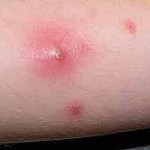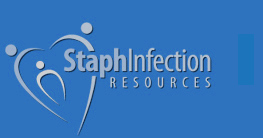Staph Treatment Keys to Success

Painful boils are common skin infections.
If you’ve gone down the conventional treatment path without success, then you probably realize it’s going to take a different approach to win the battle against Staph. Even if you have a mild infection, going beyond conventional medicine can help you heal quicker and reduce the risk of your infection coming back later.
It’s not that conventional medicine itself is the problem, it’s simply not the whole solution for many people. For the best results, you’ll probably need a more holistic approach. And thinking holistically can be an unfamiliar and challenging thing for many people.
Thinking holistically
Holistic means more than using a natural product instead of an antibiotic drug. It’s important to see how your body works and deals with infections on a larger scale.
Your body is a self-healing mechanism that’s more powerful and intelligent than you probably realize. In fact, all most treatments really does is slow an infection long enough for your body to step in and do the heavy lifting. So your body’s immune system is really the cure for Staph infection. It’s just a matter of helping your body to do its job better.
The exact way to help your body is what successfully treating Staph is all about. Part of the process typically involves treatments and remedies. But even more it involves supporting your immune system and your body’s healing ability. And, because Staph is contagious, taking steps to control the spread of the infection is equally important.
Using the right tool for the right job
Consider using both conventional and alternative medicine to take advantage of the best both have to offer. Both approaches are valid, have their pros and cons, and work well together. Using a combination of both conventional and alternative medicine, or alternative alone, will give you the best long term success.
Fortunately, conventional options like antibiotics are more effective for Staph than for more resistant infections like MRSA. And because Staph infections are often easier to treat, alternative remedies are an excellent treatment option.
Staph skin infections: conventional methods
Most Staph infections are on the skin and many are mild to moderate in severity. According to the conventional approach, mild skin infection treatment usually includes:
- Keeping the area clean using soap and water or an antibacterial cleanser
- Applying an antibiotic ointment (either over-the-counter triple-antibiotic preparation or one prescribed by a doctor)
- Covering the area with a clean dressing
- Warm moist compresses for 20-30 minutes three or four times per day are sometime used as well.
Abscesses
If an abscess is present, they are usually surgically incised and drained by a doctor. Do not drain abscesses on your own as the bacteria can move into your blood stream causing sepsis: a potentially severe and life-threatening infection. CA-MRSA more often results in abscesses than HA-MRSA. Staph abscesses may not require antibiotic treatment.
Wound care
Regardless of what treatment approach you use, proper hygiene and wound care it important to protect others and to keep the infection from becoming worse. Local skin infections, boils or abscesses should be cleaned with soap and water and dried with a disposable towel (or wash your towel after each use when drying a wound). Do not let other people use your towel to help prevent the spread of the infection to others.
In some cases, oral antibiotics may be given for skin infections.
Alternative remedies to treat Staph
Essential oils such as tea tree oil are mild, safe and strongly antibacterial and often used for skin infections. Manuka honey is another popular methods that both dries out the infection site and provides antibacterial action.
Whatever treatments you use, be sure include them as part of a more holistic Staph treatment approach. Treatments and remedies are helpful, but a key part of holistic healing is immune support.





